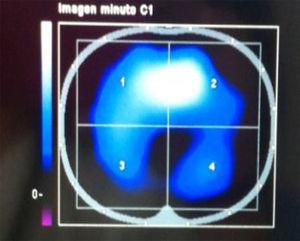We would like to thank the authors of the letter entitled “Acute respiratory distress secondary to blood transfusion” for their interest in our article.1 We agree with them that blood derivatives transfusion (whole blood cells, red cells, apheresis platelets, fresh frozen plasma, cryoprecipitates, stem cell products and endovenous inmunoglobulins) are well recognized, but infrequent, risk factors for Acute respiratory distress syndrome (ARDS).2 In the original manuscript,1 blood derivatives products and other ARDS risk factors are not mentioned because it is focused on what is required to define a “disease” and the relation between ARDS and diffuse alveolar damage (DAD). From our point of view, the effect of each risk factor in ARDS susceptibility or outcome should be clarified after the ARDS has been agreed upon as a disease (see below).
Currently, given that it has been demonstrated that only half of ARDS patients present DAD1,3 – which is considered the histological ARDS hallmark4 – as well as the effect of DAD in the ARDS outcome,3,5 we consider that including DAD as an ARDS diagnosis criteria would increase the accuracy of the definition.1 If this proposal is accepted, the ARDS with DAD should be considered the real disease and the others (ARDS without DAD) as a misdiagnosis or mimic.6 This new interpretation determines that old paradigms and approaches should be changed.
In reference to the transfusion related acute lung injury (TRALI), firstly, its association with DAD is not well demonstrated, as because studies with pathological analysis are scarce and biased, due to the short time between the blood product administration and the deceased.7 Secondly, accepting that TRALI is risk factor for ARDS with DAD, it is unknown if the DAD induced by blood transfusion is similar to those induced by other risk factors. This fact could be of paramount importance because ARDS with DAD is a complex entity with several different physio-pathological pathways. For that reason, different subtypes of DAD would be recognized according to the processes which predominate (e.g. apoptosis, tight junction dysfunctions or alveolar clearance impairment). Finally, all of these pathological findings should be settled in a specific clinical context, in which differential clinical diagnosis, like transfusion associated circulatory overload (TACO), have been ruled out.
As a conclusion, we recognize that blood transfusion derivatives can trigger episodes of severe respiratory insufficiency, but their relation to ARDS with DAD is still unknown. It is evident that improving the diagnosis accuracy seems to be an initial and basic requirement to enhance the efficacy and effectiveness of future treatment.




